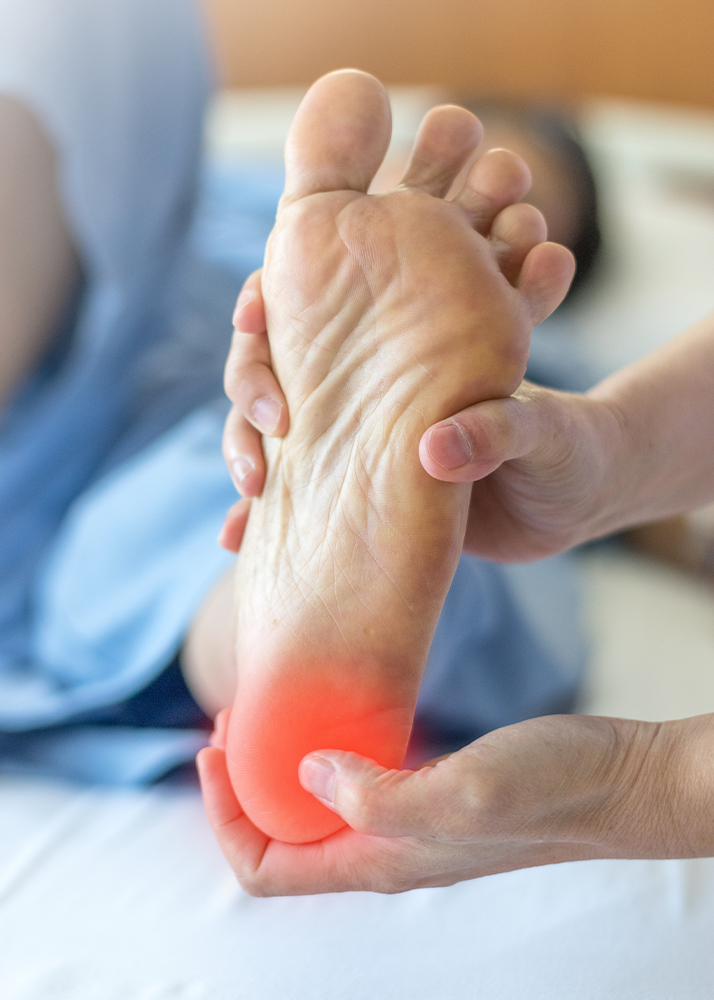Plantar Fasciitis

Comprehensive Heel and Arch Care
Relief and Treatment for Plantar Fasciitis Pain
Plantar fasciitis is one of the most common causes of heel and arch pain, and it occurs when the plantar fascia—the strong band of connective tissue running along the bottom of the foot—becomes irritated or damaged. This ligament stretches from the heel to the ball of the foot and plays a vital role in supporting the arch and absorbing shock during movement. When it is placed under too much stress, the fascia can develop inflammation, irritation, or even small tears that cause persistent discomfort. Patients often describe the pain as sharp or stabbing, particularly noticeable with the first steps in the morning, after periods of sitting, or when climbing stairs. While symptoms may ease with movement, the discomfort can return after long periods of standing or activity. If left untreated, plantar fasciitis can worsen over time, limiting mobility and making daily tasks increasingly difficult.
Causes of Plantar Fasciitis
Plantar fasciitis may develop due to a combination of risk factors, including:
- Wearing shoes with poor arch support or walking barefoot frequently
- Flat feet, high arches, or abnormal foot mechanics
- Obesity or sudden weight gain, increasing strain on the fascia
- A rapid increase in physical activity or high-impact exercise
- Weak foot and ankle muscles
- Tight calf muscles or limited flexibility
- Arthritis or other joint conditions
Signs and Symptoms
Common symptoms of plantar fasciitis include:
- Sharp heel or arch pain with the first steps in the morning
- Discomfort after standing, sitting, or walking for long periods
- Pain that worsens when climbing stairs or after intense activity
- Stiffness or tenderness along the bottom of the foot
Diagnosis and Treatment
A podiatrist will perform a physical exam and may order imaging, such as an x-ray, to confirm the diagnosis and rule out other causes of heel pain. Treatment options may include:
- Rest and activity modification to reduce strain
- Stretching and strengthening exercises for the feet and calves
- Supportive shoes or custom orthotics for better arch support
- Ice therapy and anti-inflammatory medications to ease pain
- Physical therapy for long-term strength and flexibility
- Night splints to keep the fascia stretched during sleep
- In severe or chronic cases, injections or surgical options may be considered
Prevention and Self-Care
To lower the risk of plantar fasciitis or prevent recurrence:
- Wear supportive footwear with good cushioning and arch support
- Warm up and stretch before activity, focusing on calves and arches
- Avoid sudden increases in exercise intensity or duration
- Maintain a healthy weight to reduce pressure on the feet
Start Your Journey to Wellness Today
Talk With Foot and Ankle Specialist Today!
If heel or arch pain is affecting your mobility, don’t wait for it to worsen. Contact our office to schedule an appointment. Our team will provide a proper diagnosis and develop a treatment plan designed to relieve pain, restore mobility, and get you back on your feet.

